Car Manufacturers with the Highest Overall Fuel Economy in 2023

New vehicle CO2 emissions and fuel economy saw their most significant improvement in more than a decade in 2023, according to the Environmental Protection Agency’s 2023 Automotive Trends Report, released in December.
New vehicle CO2 emissions hit record lows while fuel economy reached record highs, the agency noted, with manufacturers putting efforts into improving emissions and fuel economy over the past five years. The General examined data from the EPA’s trends report to determine which car manufacturers had the highest overall fuel economy in 2023 and how that list has changed over time. Companies are ranked by the average real-world miles per gallon for all of the cars they produced last year. Also included is the amount of CO2 emissions per mile traveled. Data is preliminary and based on info provided by automakers.
Although the four largest classes of passenger vehicles in the U.S. have record-low emissions, the growing market demand for SUVs has counteracted some of the fleetwide benefits of lower emissions and higher fuel economy.
News of the record figures comes as the EPA, with the support of industry leaders, announced on March 20 that it finalized some of the most stringent standards for pollution from passenger cars, light-duty trucks, and medium-duty automobiles. The standards aim to cut back at least 7 billion tons of CO2 emissions and bring in approximately $100 billion in annual net benefits to society.
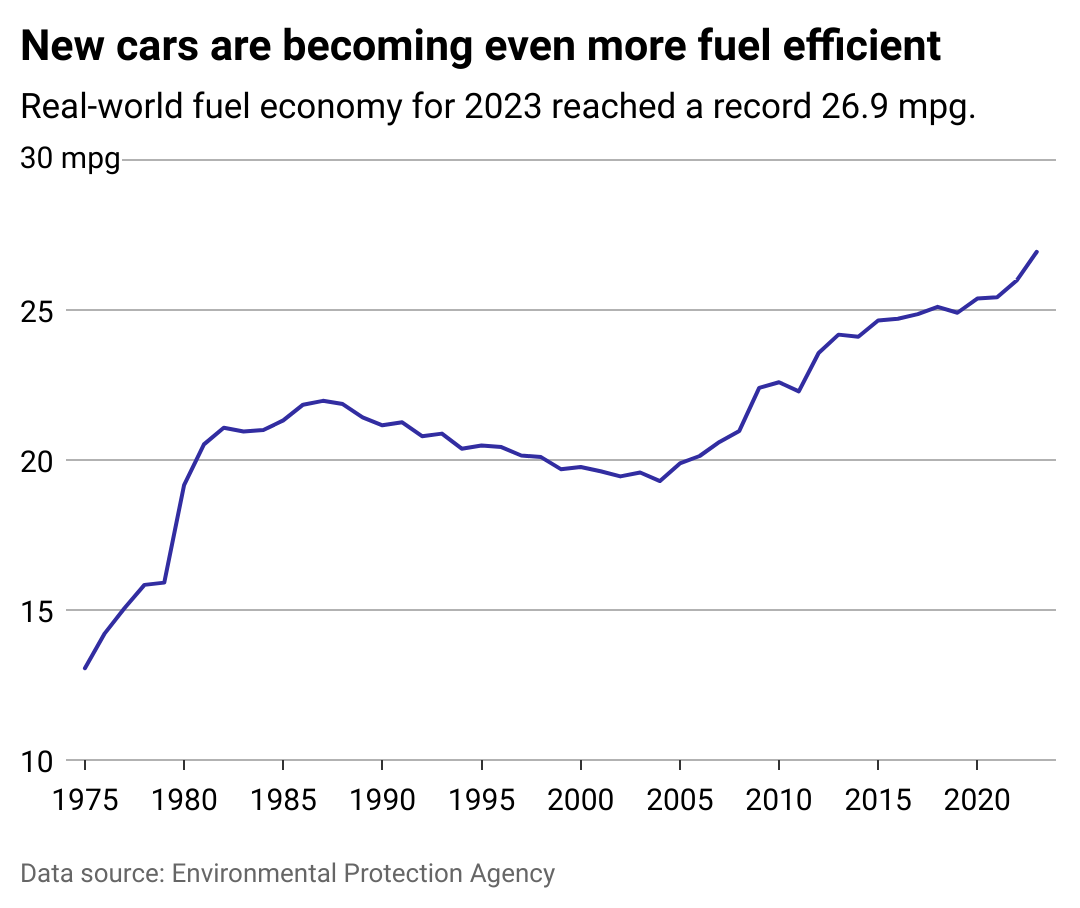
AMAZING AUTO INSURANCE
Discover one of the highest rated auto insurance agencies with over 60 years of protecting drivers around the nation.
The long road to better fuel economy
In the 1950s, Californian researcher Arie Haagen-Smit established the link between automobile emissions and smoggy skies over Los Angeles. Since then, Congress has empowered the EPA—established by President Richard Nixon in 1970—to regulate emissions from automobiles and other moving sources of emissions through approaches such as incentivizing manufacturers to improve engine designs and develop fuels of higher quality.
The push toward more fuel-efficient vehicles began with the oil crisis of 1973 when the Organization of Arab Petroleum Exporting Countries imposed an embargo on the U.S. and many of its allies for their support of Israel. Until the embargo, fuel efficiency was not a key selling point for automobile buyers: In the ’70s, most vehicles boasted just 12 miles to the gallon.
In 1975, Congress passed the Energy Policy and Conservation Act, putting into place the Corporate Average Fuel Economy standards that called for new passenger vehicles to have a fuel economy of 27.5 mpg by 1985. The CAFE standards and regulatory policymaking by the EPA contributed to the rise in fuel efficiency through the ’70s. From the late 1990s to the early 2000s, demand for SUVs gained momentum. With bigger vehicles came higher fuel consumption and lower fuel economy. In 2007, Congress passed the Energy Independence and Security Act, raising the target efficiency for new vehicles to 35 mpg by 2020.
Growing environmental concerns and local, federal, and state governments’ incentives have motivated consumers to gradually shift to electric vehicles, which have contributed to massive efficiency gains in recent years. Electric cars have higher fuel efficiency than their gas-powered counterparts, at 60-73% efficiency.
Keep reading to see which car manufacturers had the highest overall fuel economy in 2023, ranked in ascending order to the #1 fuel economy.

Jonathan Weiss // Shutterstock
#14. Stellantis
– Real-world fuel economy: 22 miles per gallon
— 19 city mpg
— 24.9 highway mpg
– Real-world CO2 emissions: 397 grams per mile
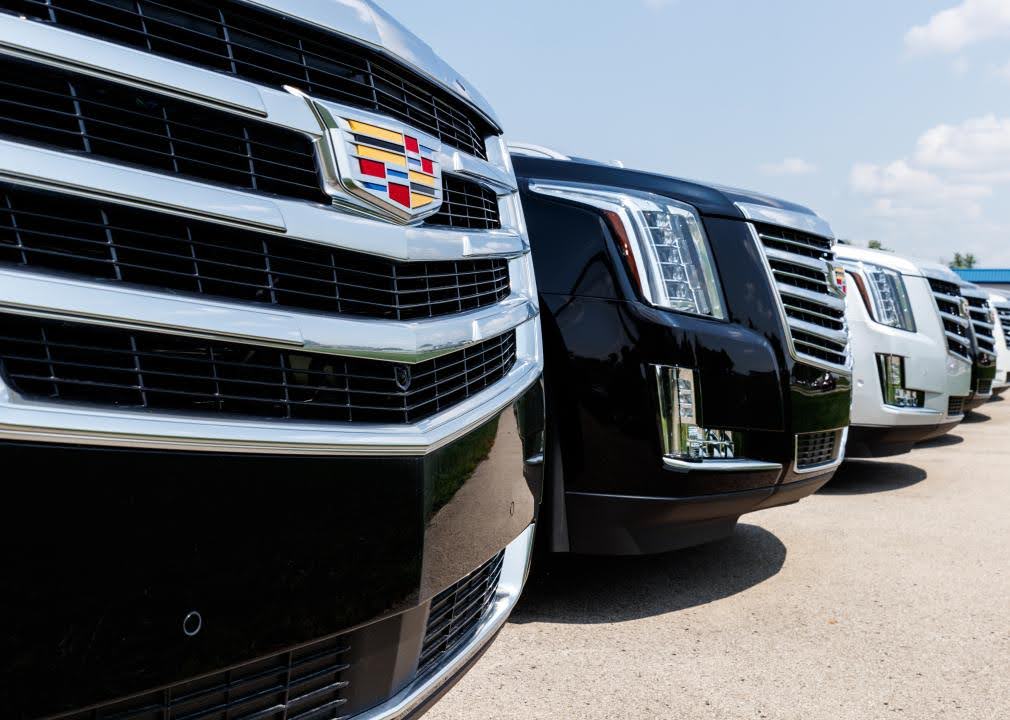
Jonathan Weiss // Shutterstock
#13. GM
– Real-world fuel economy: 22.2 miles per gallon
— 19.6 city mpg
— 24.8 highway mpg
– Real-world CO2 emissions: 399.3 grams per mile

jon lyall // Shutterstock
#12. Ford
– Real-world fuel economy: 23.1 miles per gallon
— 20.5 city mpg
— 25.4 highway mpg
– Real-world CO2 emissions: 376.4 grams per mile

NothingIsEverything // Shutterstock
#11. BMW
– Real-world fuel economy: 27.4 miles per gallon
— 23.9 city mpg
— 30.9 highway mpg
– Real-world CO2 emissions: 310.4 grams per mile
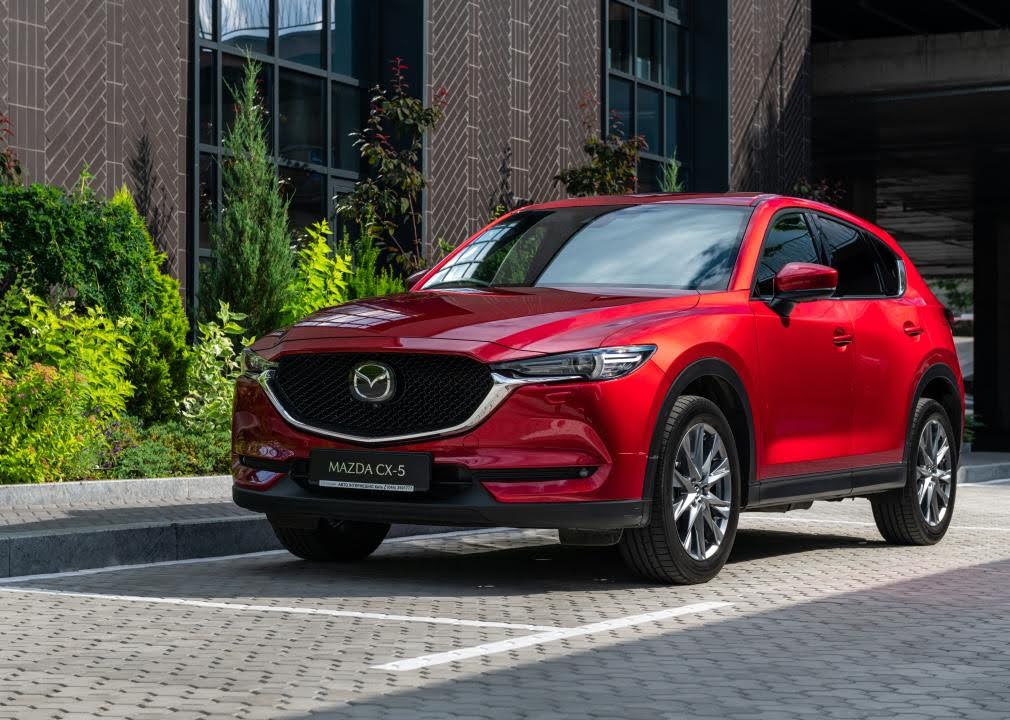
Anton_AV // Shutterstock
#10. Mazda
– Real-world fuel economy: 27.5 miles per gallon
— 24.2 city mpg
— 30.6 highway mpg
– Real-world CO2 emissions: 322.9 grams per mile
FIND AFFORDABLE CAR INSURANCE
Get a hassle-free online quote to find the cheap car insurance you need at no cost in just two minutes.
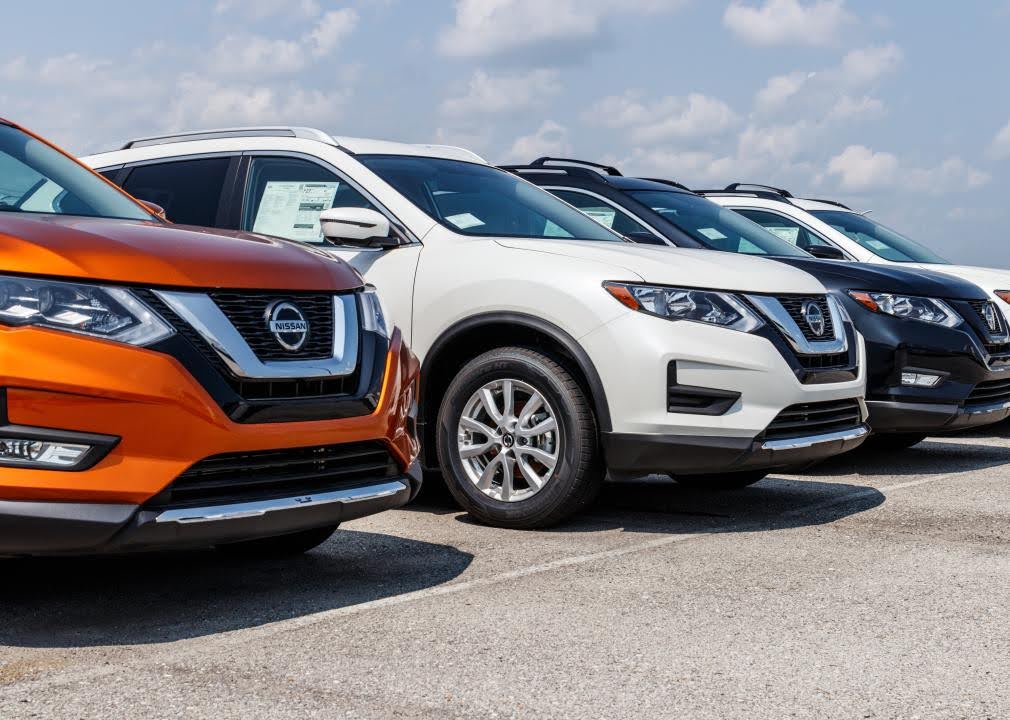
Jonathan Weiss // Shutterstock
#9. Nissan
– Real-world fuel economy: 27.8 miles per gallon
— 24.3 city mpg
— 31.3 highway mpg
– Real-world CO2 emissions: 314.2 grams per mile

Ivan Kurmyshov // Shutterstock
#8. Mercedes
– Real-world fuel economy: 28 miles per gallon
— 24.2 city mpg
— 31.7 highway mpg
– Real-world CO2 emissions: 297.6 grams per mile

Valdis Skudre // Shutterstock
#7. Subaru
– Real-world fuel economy: 28 miles per gallon
— 24.7 city mpg
— 31.1 highway mpg
– Real-world CO2 emissions: 315.6 grams per mile

Streetmetal // Shutterstock
#6. Toyota
– Real-world fuel economy: 28.2 miles per gallon
— 25.6 city mpg
— 30.5 highway mpg
– Real-world CO2 emissions: 313.8 grams per mile
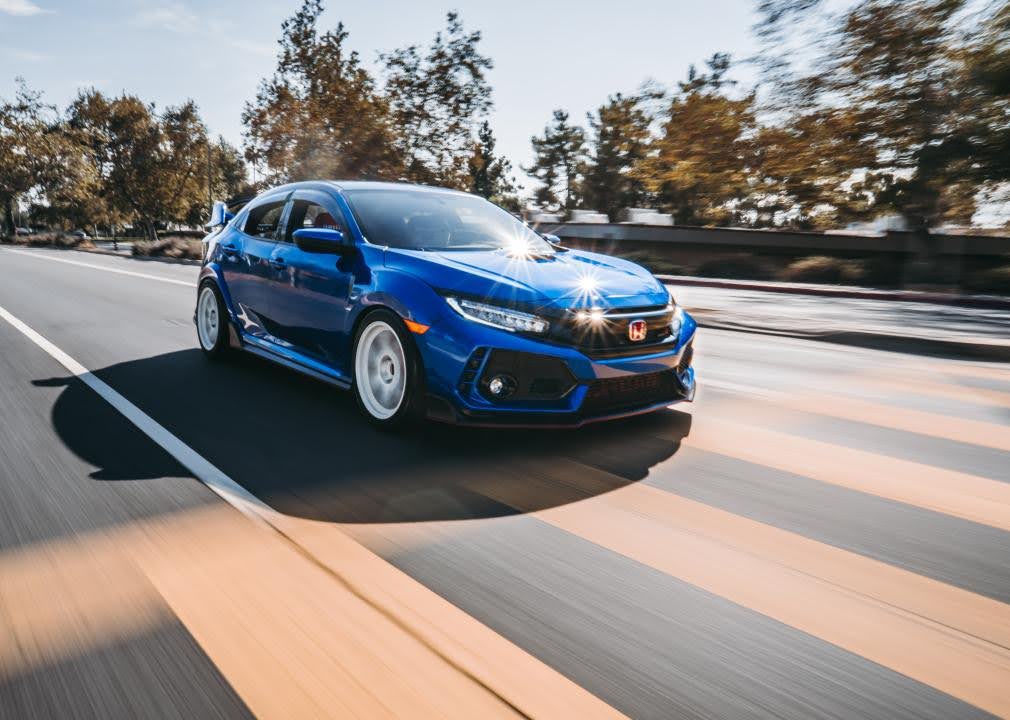
PaulLP // Shutterstock
#5. Honda
– Real-world fuel economy: 28.7 miles per gallon
— 25.8 city mpg
— 31.4 highway mpg
– Real-world CO2 emissions: 309.6 grams per mile

yousang // Shutterstock
#4. VW
– Real-world fuel economy: 28.9 miles per gallon
— 25.3 city mpg
— 32.4 highway mpg
– Real-world CO2 emissions: 291.9 grams per mile

meowKa // Shutterstock
#3. Hyundai
– Real-world fuel economy: 29.1 miles per gallon
— 26 city mpg
— 32 highway mpg
– Real-world CO2 emissions: 299.6 grams per mile
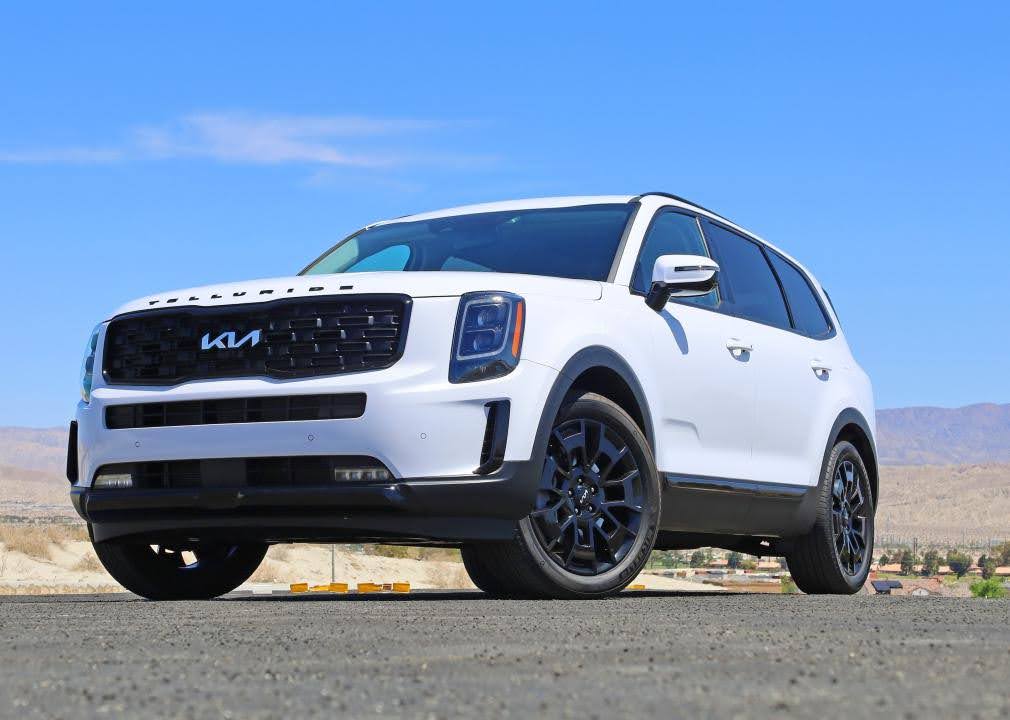
Luxury Fred Sherman // Shutterstock
#2. Kia
– Real-world fuel economy: 29.7 miles per gallon
— 26.5 city mpg
— 32.7 highway mpg
– Real-world CO2 emissions: 293.3 grams per mile
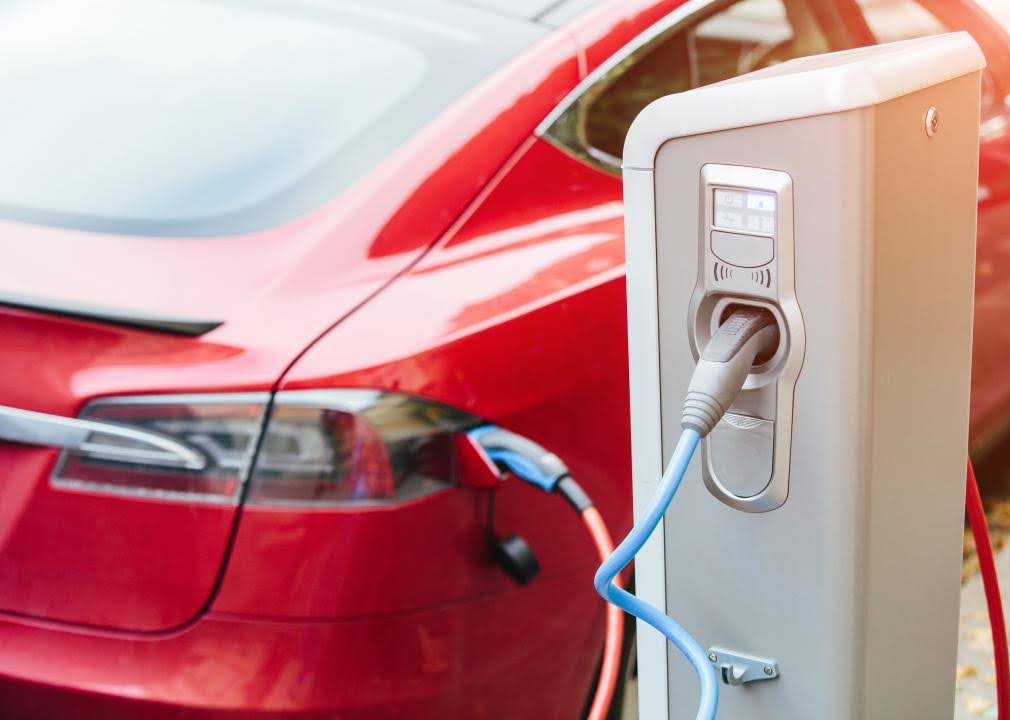
Scharfsinn // Shutterstock
#1. Tesla
– Real-world fuel economy: 120.7 miles per gallon
— 126.7 city mpg
— 116.5 highway mpg
– Real-world CO2 emissions: 0 grams per mile
COMMITMENT-FREE CAR INSURANCE QUOTES
In two minutes or less, you can get free, no-commitment car insurance quotes without speaking to a representative.
Written by: Andrew Jose. Data Work By Elena Cox. Story editing by Nicole Caldwell. Copy editing by Kristen Wegrzyn. Photo selection by Clarese Moller.







